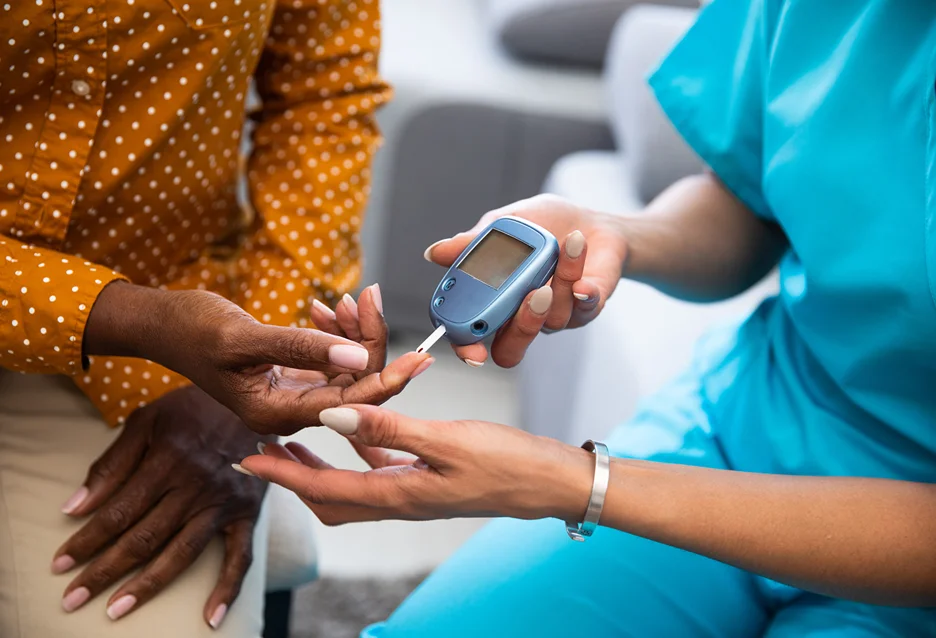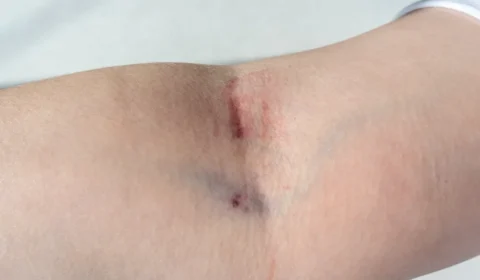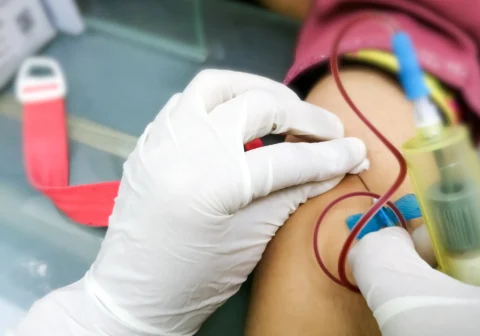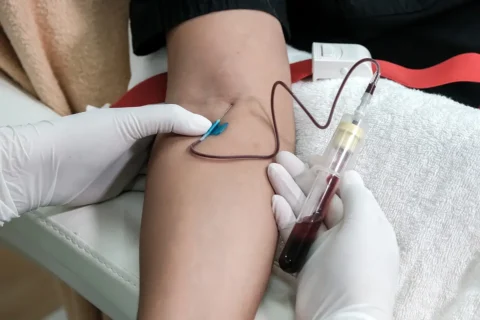Effective for Weight Loss and Glycemic Control
Mounjaro, also known by the generic name tirzepatide, represents a major step forward in the treatment of type 2 diabetes. Tirzepatide works in a unique way that sets it apart from other diabetes medications currently available.
You see, tirzepatide targets two important hormones involved in blood sugar control: glucagon-like peptide-1 (GLP-1) and glucose-dependent insulinotropic polypeptide (GIP). By activating both the GLP-1 and GIP receptors found in your pancreas and digestive system, tirzepatide helps your body respond better to the carbohydrates you eat.
This dual-acting mechanism means tirzepatide can offer some impressive benefits. In clinical studies, patients who received tirzepatide experienced significant reductions in their hemoglobin A1c (HbA1c) levels – a measure of long-term blood sugar control.
These reductions were greater than what was seen with placebo and many other diabetes medications. Moreover, patients on tirzepatide lost an average of 15 to 23 pounds more than patients on placebo and other diabetes treatments.
So what exactly makes tirzepatide work so well?
The key lies in how it activates those two important hormone receptors found throughout your body. By stimulating both GLP-1 and GIP receptors after a meal, tirzepatide helps improve your insulin production and the ability of your cells to use that insulin. The end result is better sugar management and often weight loss too.
How to Use Tirzepatide and Important Considerations

Tirzepatide is available as an injection that is recommended to be administered once per week under the skin. The starting dose is 5 milligrams per week, and this can be increased after four weeks to either 10 or 15 milligrams per week based on how you are responding to treatment.
The key is to work with your doctor to find the dose that best controls your blood sugar while minimizing side effects. Your doctor will likely monitor your hemoglobin A1c levels, blood sugar readings and any side effects you experience to determine the optimal tirzepatide dose for you.
It’s important to remember that tirzepatide is meant to be used in addition to diet and exercise – not as a replacement. A healthy diet lower in carbs and added sugar combined with regular physical activity can help maximize the benefits of tirzepatide therapy.
Common side effects of tirzepatide include nausea, vomiting, diarrhea, constipation, decreased appetite and abdominal pain. These side effects are usually mild to moderate and tend to improve over time as your body adjusts.
Still, discuss any bothersome side effects with your doctor, as they may be able to suggest ways to lessen the symptoms.
Finally, tirzepatide should be used with caution in certain groups of people, including those with a personal or family history of medullary thyroid cancer or Multiple Endocrine Neoplasia syndrome type 2. Tirzepatide has also not been studied in patients with a history of pancreatitis, so it may not be recommended for those individuals.
How Tirzepatide Compares to Other Treatments
While tirzepatide represents an important step forward in diabetes care, it is important to consider how it compares to other treatment options available. Here are some key takeaways:
Tirzepatide has shown superior effectiveness compared to GLP-1 receptor agonists like semaglutide (Ozempic) in lowering hemoglobin A1c and promoting weight loss. In clinical trials, tirzepatide reduced HbA1c levels 0.5% more than semaglutide and resulted in greater average weight loss.
However, tirzepatide and semaglutide have similar safety profiles and side effect risks as members of the GLP-1 receptor agonist class. Both medications can cause gastrointestinal side effects and have a low risk of hypoglycemia.
While not a cure, tirzepatide offers a convenient injectable option for long-term diabetes management that is easier to adhere to than multiple daily insulin injections. Some patients and doctors may prefer weekly tirzepatide injections over a basal insulin regimen.
Overall, tirzepatide provides another treatment choice for achieving glycemic control and improving outcomes in patients with type 2 diabetes.
The choice of medication depends on many factors like effectiveness, safety profile, side effects, convenience, cost and individual patient needs and preferences.
The clinical data suggests tirzepatide presents several advantages over GLP-1 receptor agonists and basal insulin – though these other treatment options remain appropriate for many patients. Talk to your doctor to determine if tirzepatide may be right for you based on your specific health history, treatment goals and lifestyle.
Summary of SURPASS Clinical Trial Results
Much of what we know about the safety and efficacy of tirzepatide comes from the Phase 3 SURPASS clinical trials funded by Eli Lilly and Company, the manufacturer of tirzepatide under the brand name Mounjaro.
The SURPASS program included five randomized controlled trials that evaluated tirzepatide as both monotherapy and combination therapy in over 6,000 adult patients with type 2 diabetes:
• SURPASS-1 compared tirzepatide to placebo as an add-on to metformin
• SURPASS-2 compared tirzepatide to semaglutide as an add-on to metformin
• SURPASS-3 compared tirzepatide to insulin glargine as an add-on to metformin
• SURPASS-4 compared tirzepatide to placebo as an add-on to insulin ± metformin
• SURPASS-5 compared tirzepatide to insulin degludec as an add-on to metformin
Across the SURPASS trials, the results were overwhelmingly positive:
- Patients treated with the maximum 15 mg dose of tirzepatide experienced reductions in HbA1c levels ranging from 1.9% to 2.6% compared to placebo.
- Average weight loss with 15 mg tirzepatide ranged from 6.2 kg to 12.9 kg (13.7 to 28.4 lbs) compared to placebo.
- Patients treated with 15 mg tirzepatide had greater reductions in HbA1c, systolic blood pressure and body weight compared to active comparators like semaglutide, insulin glargine and insulin degludec.
- The overall safety profile of 15 mg tirzepatide was similar to comparators, with gastrointestinal side effects being the most common adverse events reported.
In summary, the SURPASS trial program demonstrated that tirzepatide resulted in clinically meaningful improvements in glycemic control and weight loss for patients with type 2 diabetes while maintaining a safety profile similar to other GLP-1 receptor agonists.
These findings supported the FDA approval of tirzepatide for the treatment of adults with type 2 diabetes.
Ongoing Studies in Other Conditions
In addition to studies in obesity and cardiovascular disease, several ongoing trials are investigating the potential role for tirzepatide in treating the following conditions:
Heart Failure with Preserved Ejection Fraction
A Phase 2 trial called SPRINT-HFpEF is evaluating tirzepatide versus placebo in over 500 patients with heart failure and preserved ejection fraction. The primary goal is to see if tirzepatide improves functional capacity and symptoms in these individuals.
Nonalcoholic Steatohepatitis (NASH)
An ongoing Phase 2 trial called SURPASS-NASH is studying tirzepatide versus placebo in over 450 non-cirrhotic adults with nonalcoholic fatty liver disease and either diagnosed or suspected NASH. The study will evaluate changes in liver histology after 72 weeks of treatment.
Preliminary data suggests tirzepatide may improve liver enzymes, lipids and body composition in patients with NASH. But more definitive data from the ongoing trial is needed to determine how effective tirzepatide truly is for treating NASH.
Sleep Apnea
A small Phase 2 trial evaluated tirzepatide versus placebo in 63 individuals with obesity and moderate to severe obstructive sleep apnea. Results found tirzepatide significantly improved sleep apnea severity and respiratory disturbance indices after 72 weeks of treatment.
However, much larger and longer studies are needed before tirzepatide could be considered a potential treatment for sleep apnea. Weight loss alone may have contributed to the improvements observed in this small preliminary study.
Research Limitations and Remaining Questions
Like all new medications, additional research is needed to address limitations and unanswered questions around tirzepatide:
Limited Long-Term Data
The SURPASS trials only followed patients for up to 2 years, which is relatively short-term for a chronic condition like type 2 diabetes.
Longer studies of 5-10 years are needed to better understand the long-term safety, efficacy and durability of response to tirzepatide therapy.
Unknown Effects in Other Patient Groups
More data is needed on the effects of tirzepatide in specific patient populations, including the elderly, those with kidney dysfunction and various comorbidities.
Limited studies have evaluated tirzepatide in combination with other diabetes medications beyond metformin and insulin. Broader combination studies would be valuable.
Unknown Mechanism of Action
While targeting both the GIP and GLP-1 receptors is a promising approach, the exact mechanisms by which this dual-agonism improves outcomes remains unclear.
Further research into how tirzepatide works at a cellular and molecular level could provide insights to optimize its use and identify patients most likely to benefit.
Cost-Effectiveness and Health Economics
Studies evaluating the overall cost-effectiveness, health economic impact and “real-world” effectiveness of tirzepatide beyond clinical trials are limited.
More research in this area would help inform reimbursement, formulary decisions and the value tirzepatide provides compared to other diabetes treatments.
While results so far are encouraging, additional studies – particularly longer-term outcome trials, cost-effectiveness analyses and studies in specific patient populations – are warranted to address current limitations and knowledge gaps around tirzepatide.
As with any new therapy, ongoing research will help determine the appropriate role for tirzepatide in the standard of care for type 2 diabetes and perhaps other cardiometabolic conditions in the years ahead.
Conclusions on Tirzepatide for Type 2 Diabetes

Tirzepatide represents a promising new treatment option for adults with type 2 diabetes based on the following conclusions:
Tirzepatide is the first-in-class dual GIP/GLP-1 receptor agonist approved for the treatment of type 2 diabetes. Its unique mechanism of action targeting two key metabolic hormones has the potential to improve outcomes beyond what traditional GLP-1 receptor agonists can offer.
Results from the Phase 3 SURPASS trials demonstrate that tirzepatide provides superior glycemic control compared to placebo, GLP-1 receptor agonists and basal insulin, with the maximum 15 mg dose lowering HbA1c by up to 2.6%.
Tirzepatide also enabled clinically meaningful weight loss of up to 31 pounds in the SURPASS trials – more than any comparators studied. This degree of weight loss may confer additional health benefits for patients with type 2 diabetes.
The safety profile of tirzepatide in the SURPASS trials was generally similar to other GLP-1 receptor agonists, with gastrointestinal side effects being the most common adverse events. Hypoglycemia risk was low when tirzepatide was not used with insulin secretagogues.
While additional research – particularly long-term safety and effectiveness data – is needed, current evidence suggests tirzepatide may become an important treatment option for achieving glycemic control and potentially improving cardiovascular outcomes in many adults with type 2 diabetes.
However, as with any new drug therapy, patients should discuss the risks and benefits of tirzepatide with their healthcare provider and consider non-medication approaches to diabetes management before starting any new medication.
In summary, based on currently available results, tirzepatide seems to offer real advantages over existing therapies for type 2 diabetes. However, more research -particularly rigorous long-term safety and effectiveness studies – are warranted to determine the full role for tirzepatide in optimizing outcomes for adults living with this chronic condition.






